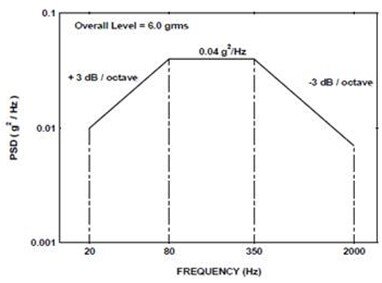MIMO Control Null Test on Three-Axis Shaker Systems
Single axis vibration control tests are widely used to qualify the behavior of the unit under test (UUT). If the UUT passes the test requirement then it provides confidence about the sustainability and durability of the test structure. Excitation in multiple directions is required to test the robustness of the UUT which has led to the wide use of Multiple-Input Multiple-Output (MIMO) testing for the programmed test profiles. It is vital to verify that the hardware setup allows for the unit to be tested in various configurations of single axis, dual axis, or three-axis. Long hours are required to manually change the setup because of the involved components (shaker setup, slip table, driving bar, fixture, etc.) .
Crystal Instruments provides one unique solution. The Control Null feature provided in Crystal Instruments’ Multiple-Input Multiple-Output Random vibration control software allows users to perform single axis or dual axis vibration control tests on a three-axis shaker setup with a simple setup in the software. The user can perform tests in any direction of interest. With this feature, the software nulls the selected directions while maintaining the control in the desired direction(s).
Using the Control Null feature, the target level of the vibration for the “Control null” channel will be minimized. This allows the user to run the test with one axis while the other two axis shakers will try to hold and maintain the shaker to be still on a three-axis shaker configuration. The drives sent to these control null channels are computed to achieve the lowest possible responses along the control null direction. The responses in the suppressed directions will be significantly lower while the dominant direction is still under control.
Test cases are used to illustrate the efficiency of this feature. A three-axis electrodynamic shaker system with 20 kN shakers, and a small table-top three-axis shaker system are used to demonstrate the strength of this functionality by Crystal Instruments.
Figure 1. Three-Axis Electrodynamic Shaker System
Figure 2. Table-top Three-Axis system
The proficient Spider-80M system by Crystal Instruments’ is a dedicated hardware for MIMO vibration control testing applications. This chassis features 8 outputs for maximum efficiency in MIMO testing. The MIMO Random test type from Crystal Instruments’ EDM MIMO VCS software provides precise, real-time, multi-channel control for multi-axis random vibration control tests.
Figure 3. Crystal Instruments Spider-80M MIMO Vibration Controller
Test Details
1. A scaled down NAVMAT profile is programmed to run the random vibration control test. The target level is 1 grms.
Figure 4. NAVMAT Profile
2. First, a single axis vibration control test is run while controlling the shaker system in the X-direction and measuring responses in other two directions of Y and Z. This vibration control test is performed on a three-axis electrodynamic shaker system.
Figure 5. Single Axis (without Control Null) Random Vibration Control test in X-direction
3. The same profile as shown above is now run while controlling all three directions on the same hardware setup. The X-axis is controlled to the profile while the Y and Z directions are set to “control null”.
Figure 6. Three Axis (with Control Null in Y & Z) Random Vibration Control test in X-direction
4. When comparing the single-axis test and the three-axis test with the Control null results below, users can observe that the RMS value for the non-dominant directions (Y and Z) is almost four times lower with the Control Null feature.
| Direction | Without Control Null (Single Axis Test) - RMS Value | With Control Null (Three Axis Test) - RMS Value | Difference |
|---|---|---|---|
| X (Control) | 9.75 m/s2 | 9.73 m/s2 | N/A |
| Y | 2.89 m/s2 | 0.74 m/s2 | Suppressed by 74.4% |
| Z | 2.91 m/s2 | 0.81 m/s2 | Suppressed by 72.2% |
Table 1. RMS Value comparison for Vibration Control Test with and without Control Null
For the single axis vibration control test, the “g” value in the non-dominant directions is 30% of the programmed NATMAT profile. For the three-axis test with the control null feature enabled, the “g” value in the non-dominant directions is 8% of the programmed NAVMAT profile. This shows that the Control Null feature is very efficient in suppressing the response in the non-dominant directions.
5. A similar test as the previous is performed on a table-top three-axis shaker system. The X and Y directions are “control nulled” while the Z-profile is controlled to the programmed common carrier profile for the vertical direction.
Figure 7. Three Axis (with Control Null in X & Y) Random Vibration Control test in Z-direction
The APS and block signals of X, Y and Z directions illustrates that the drives are tuned in the X and Y directions to suppress the vibration along these directions, while maintaining the control in the Z-direction.
The results emphasize the efficiency and reliability of the Crystal Instruments’ MIMO Vibration Control Systems. To learn more, please visit www.crystalinstruments.com/mimo-vibration-control-overview.







